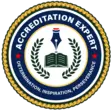Risk Management
Enterprise Risk Management (ERM) across various industries is an inclusive methodology for identifying, evaluating, and managing risks that could influence an organization's capacity to achieve its objectives. It represents a structured and forward-thinking strategy designed to assist businesses in navigating uncertainties and seizing opportunities that could affect their mission, financial stability, brand, reputation, adherence to regulations, and broad strategic goals.















